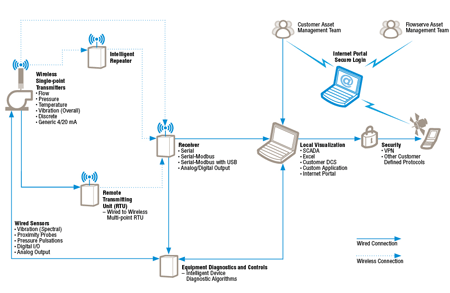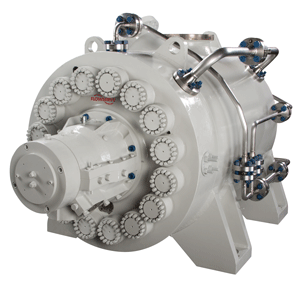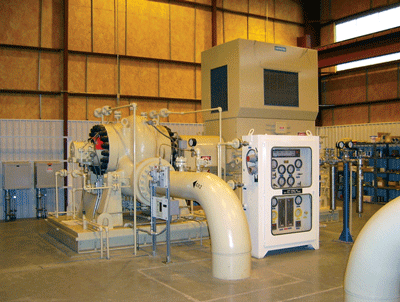The economic downturn has forced most companies to find ways to do more with less, but oil producers are finding themselves in a particularly challenging situation.
As oil is increasingly difficult to locate and recover, production must increase from all reservoirs, including from older fields. Simultaneously, facilities are taking steps to reduce costs or keep operating budgets flat.
Increased production requirements and cost reduction present oil producers with some major challenges. For example, oil producers must determine the best way to balance spare parts availability and control inventory costs. Additionally, adequately and accurately planning maintenance can be a challenge. This problem is exacerbated when useful equipment condition data is not available. If the information is available, the expertise to properly analyze and react is not, which can happen as more engineers retire and take decades of experience with them.
Asset management programs are designed to address these issues, while allowing facilities to allocate funds for a planned maintenance spend and remove the uncertainty from operating budgets. The visibility gained into the actual operating conditions in the plant or pipeline, combined with the expertise brought to bear through the program, result in efficiencies and maximized uptime.
In water injection and pipeline pump applications, asset management programs can help critical assets continue to help meet oil production demand. Water injection is widely employed to get the last available drop of oil out of older fields, while pipeline pumps ensure the oil is moving to market. If either asset were to experience downtime, it could carry massive financial implications.
Technology Enables Modern Asset Management Programs
Condition monitoring is not a new concept, but modern asset management programs go beyond collecting the data. These programs deliver a comprehensive view of an entire system, including analysis and diagnostics, enabling operators to do more with less while increasing visibility to previously unheard-of levels.
Modern asset management technology platforms add to and integrate with existing monitoring and communications systems. They use the latest advanced communications and information management technology, combined with proprietary diagnostic and prognostic algorithms, to enable operators to monitor the system performance in real time (see Figure 1). They are also able to use historical data for trending and analysis. Some systems use pump-specific algorithms to derive information and alerts regarding cavitation detection, aeration detection, condition monitoring, automated control and other diagnostic applications. This real-time system view enables plants to move from reactive or planned maintenance to strategic, proactive maintenance with the added benefit of continual process optimization.

Figure 1. Schematic representation of a modern asset management monitoring and control network using wired and wireless communication to feed an Internet portal.
Reaching beyond the pump system itself, asset management programs can now feed into existing business systems and allow system access anywhere via the Internet. Online portals allow this information to be accessible from any computer, whether it is on a production platform 200 miles offshore or at a corporate headquarters. Everything from inventory control based on the real-time condition of equipment and transportation scheduling to preparing for upcoming service requirements is possible with the accessibility that asset management systems provide.
Critical Processes Are Ideal for Asset Management Programs
Asset management brings a host of benefits in plant maintenance, optimization, efficiency and operating cost reduction in any application, but the critical operation of water injection and pipeline pumps make them especially well suited for an asset management program.
Water Injection
As the drive to extract every last resource from older oil fields increases and new reservoirs are deeper and increasingly difficult to drill, the size of water injection pumps-and the investment required-increases accordingly. In these applications, 11,000 kW (15,000 hp) and 550 bar (8,000 psi) pumps are becoming common (Figure 2). The cost model for any pump purchase is dependent on the resulting production rates. Asset management programs increase the uptime and efficiency of a pump while minimizing the life cycle costs, providing an improved return on investment.

Figure 2. A typical ultra high-pressure barrel pump used in water injection applications.
Offshore, water injection pumps are isolated from the support teams, equipment and technical expertise required for repair if something goes wrong. Days of reduced production can result from a failure as parts are sourced, transportation arranged and maintenance teams scheduled.
With redundancy made impractical due to the pump's size and the premium on space, understanding and predicting equipment issues are critical to maximizing production and uptime. Remotely monitoring these pumps for real-time conditions enables immediate indication and analysis of any issue, with application-specific algorithms using historical data to determine the duration of operation in the given state. This system enables operators to schedule downtime to make corrective efforts possible while the pump continues to run, keeping production disruption to a minimum.
Onshore, multiple pumps may feed a reservoir, and the lead time on repairs might not be as long or the logistics as complicated. However, production reduction due to failed pumps can be greatly minimized through the implementation of a modern asset management program. Along with the benefits of scheduling downtime to minimize disruption and ongoing optimization of the process, rerates required as the field ages can be completed with an informed view of the operation of the equipment over time and total accessibility to equipment specifications and test data.
With a 50,000- to 100,000-barrel-per-day (bpd) field, production losses of 10,000 bpd can result if a water injection pump goes down unexpectedly. As costs mount quickly, the focus is likely to be on getting the pump operational as soon as possible, not analyzing the program and making changes to improve overall operation. Accordingly, it is important to implement the strategic, proactive maintenance enabled by an effective asset management program before a problem occurs.
Pipeline Pumps
The obvious value of asset management in water injection applications is optimizing production rates. Pipeline pumps, which move the oil to market, are also a major opportunity for bottom-line savings (see Figure 3). A pipeline is the lifeline for the oil producer, and if it goes down, the money literally stops flowing.

Figure 3. Pipeline pumps are an excellent opportunity for bottom-line savings using an asset management program.
The difficulty with pipeline pumps is twofold. First, remote pumping stations are often monitored, but only for process conditions. Second, they are visited infrequently, so there is no real-time picture of equipment conditions. Asset management programs add pump condition monitoring, diagnostics and analysis to the overall pipeline conditions and can integrate with current systems to provide a real-time view of every critical piece of information along the length of that pipeline from anywhere in the world.
Seals are a critical component of any pump, and remote monitoring of seal leakage can be integrated to alert maintenance personnel to correct problems, even before a visual inspection would have revealed them.
Monitoring aspects of pump operation like seal condition, suction, discharge and case pressure, flow, specific gravity, inboard and outboard vibration spectrums and power, combined with pipeline-specific analysis and control algorithms, can predict failure modes as well as equipment lifetime. Asset management takes pipeline pump maintenance from a reactionary series of activities based on the scheduled technician visits to a strategic program to actively optimize pipeline operation, minimize spare-part inventory costs and maximize equipment life cycles.
Bottom-Line Results
Just as implementing water injection maximizes the field's productivity, to realize maximum life cycle cost reduction, oil producers should institute comprehensive asset management programs. These programs must include the latest technology in equipment monitoring and diagnosis, inventory management and data availability.
These programs enable facilities to evolve from reactive planned maintenance to strategic predictive maintenance, minimizing emergency shutdowns, downtime and operating budgets while maximizing production and equipment availability, system visibility and the efficiency of maintenance resources. Combined with expert knowledge and industry experience, asset management programs are a powerful way to impact the bottom line.

